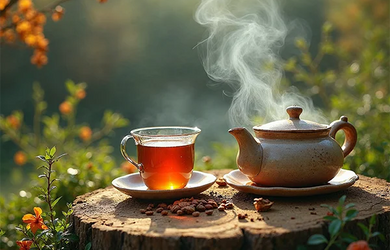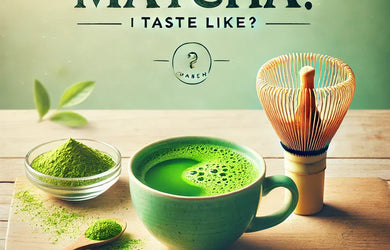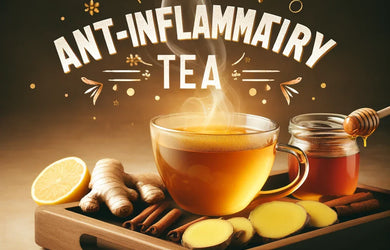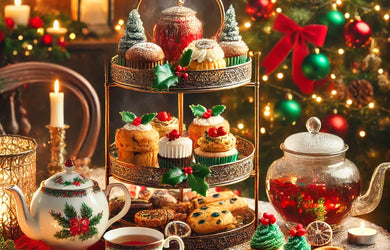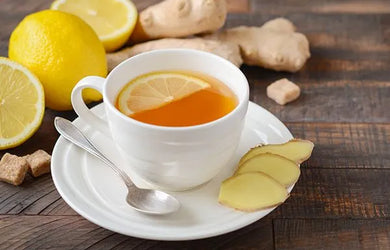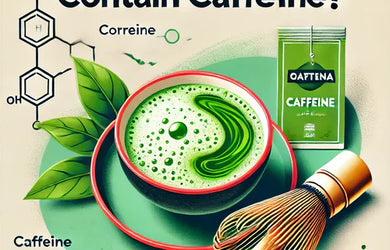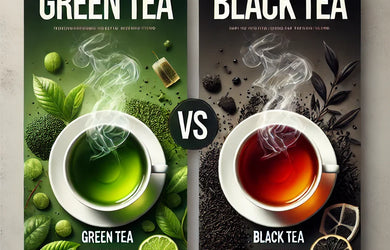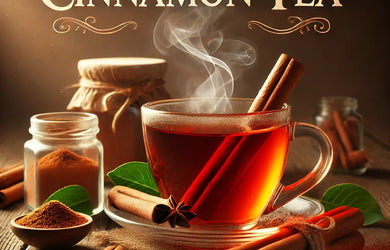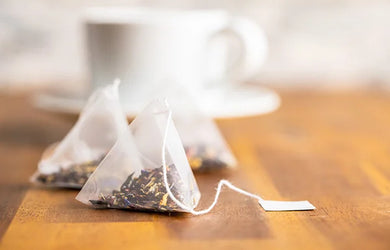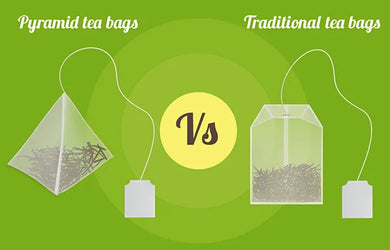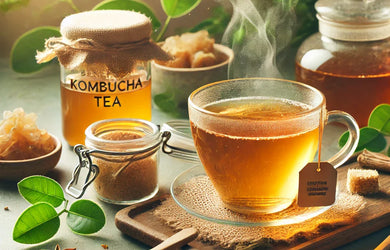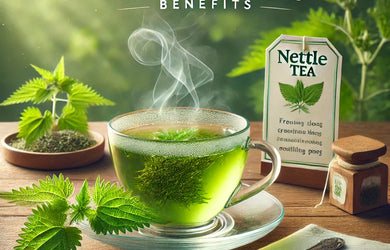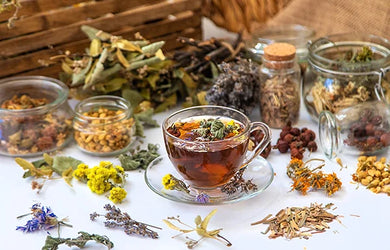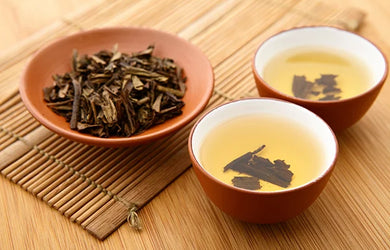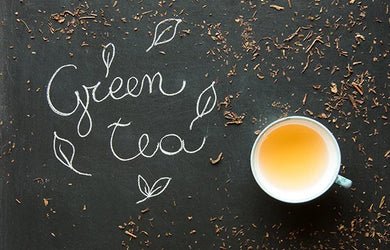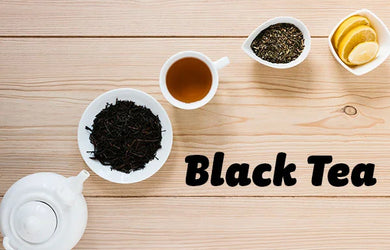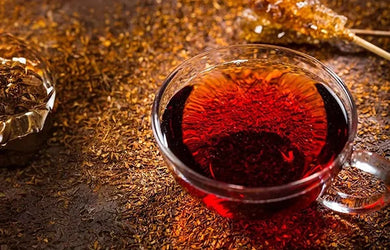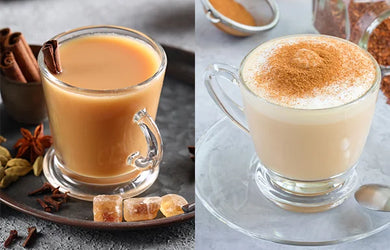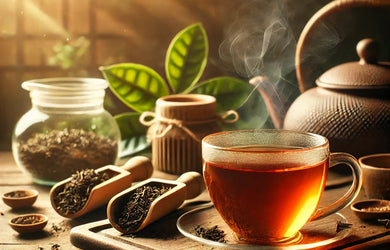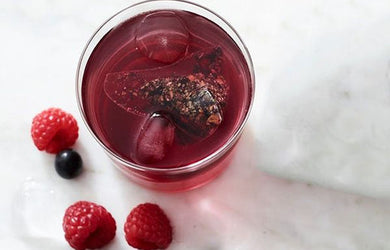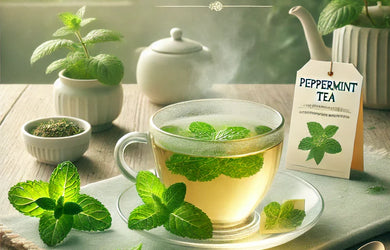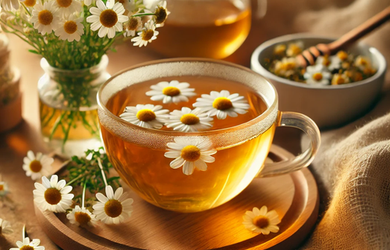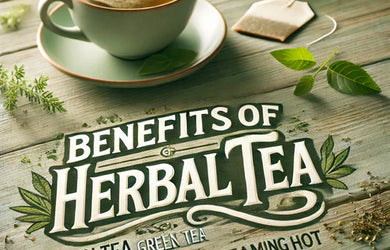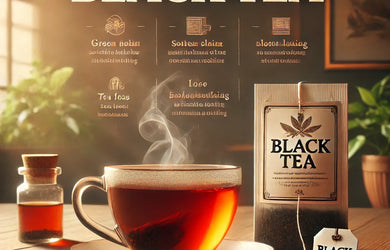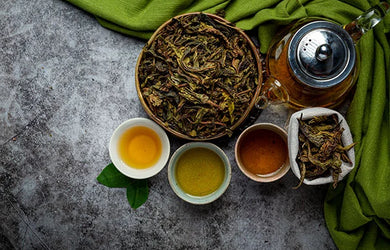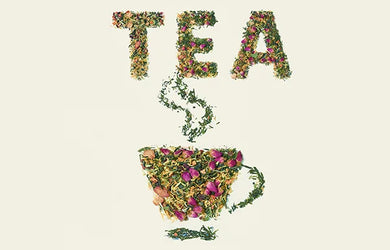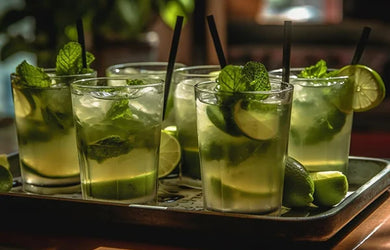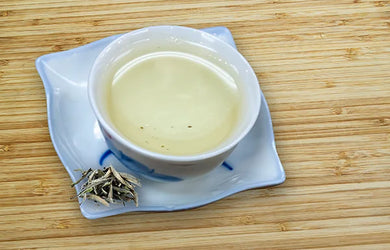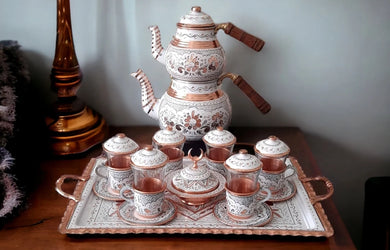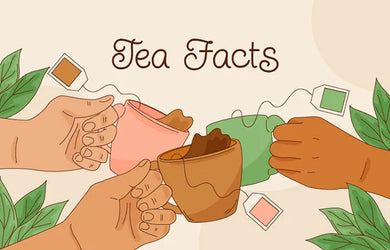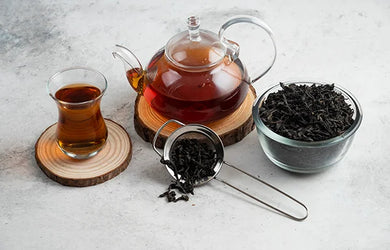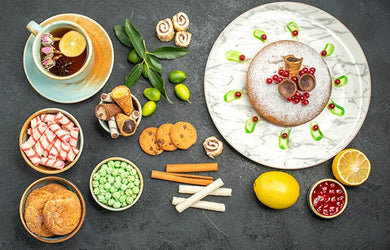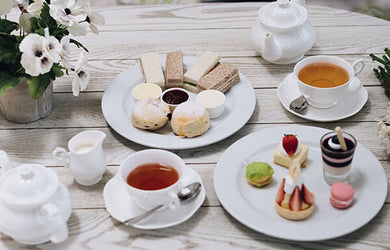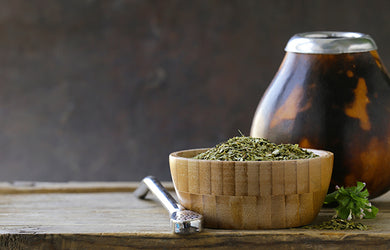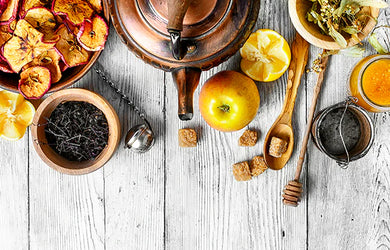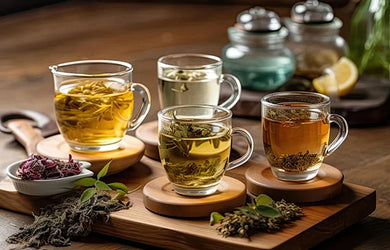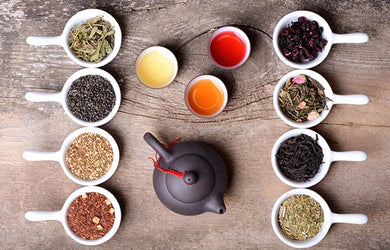matcha is that bright green tea powder you’ve probably seen in lattes and desserts! its beautiful green colour is hard to miss and makes it visually appealing.
but have you ever wondered – what does matcha taste like? not just that, even if you’re generally curious about this global sensation and want to know about its flavour or eager to learn about its origins, how it’s made or its benefits – you’ve come to the right place.
we’re here to explore all things matcha, so you can enjoy this special tea to the fullest! while we’ll check out various aspects of the tea, our main focus will be answering the question – what does matcha taste like?
what is matcha?
matcha is a unique type of green tea that comes in a powdered form. this green tea is different from the standard ones in several ways. you’re probably familiar with how the regular green tea leaves are steeped in water and then discarded once the tea is done. that’s not the case here! with matcha, you consume the whole leaf!
that’s because matcha is made by carefully grinding the tea leaves into a fine powder. so, instead of steeping the leaves and discarding them, you drink the entire powdered leaf.
another unique aspect of matcha is the way it’s grown and processed. the shade-growing process deepens the green colour of the tea. this process not only develops the colour but also helps preserve all the essential nutrients in the tea leaves. and that includes antioxidants like catechins and egcg, which are great for your health. since you’re consuming the whole leaf, matcha gives you more nutritional benefits compared to regular green tea.
but what does matcha taste like? we haven’t answered that because it has a complex taste that requires a deeper look. let’s explore that now.
matcha tasting notes
tasting matcha is an experience you won’t want to miss. its inviting green colour draws you in even before you catch its fragrance or take a sip. and when you do, its layers of flavour and aroma take it to another level.
that’s right – it’s the nuanced flavours that make matcha so special. and understanding its tasting notes can deepen your enjoyment and appreciation of this outstanding drink.
if you’re keen to explore more and finally get the answer to the question – “what does matcha taste like?”, let’s discover the layers of its flavour and figure out what makes it the way it is!
1. vegetal notes: grassy and fresh undertones
let’s begin by exploring the vegetal notes and answering the question – what does matcha taste like with them? they are one of matcha’s core attributes. matcha has a grassy flavour with fresh undertones that set it apart from other teas. this distinct taste comes from the way matcha is made – using green tea leaves that are carefully shaded, steamed and ground into a powdered form.
this unique processing method preserves the chlorophyll in the leaves. combined with the fact that matcha uses the whole tea leaf in powdered form, it results in a deeper grassy flavour compared to other green tea varieties.
2. umami: savoury and oceanic flavours
matcha’s umami flavour is another one of its most intriguing qualities. this umami note comes from the high levels of an amino acid (l-theanine) in the tea leaves that develops during the shading process before harvest. in short, this process plays a big role in developing the umami profile.
so, what does matcha taste like with its umami flavour? the umami flavour is savoury, and it’s often compared to flavours of seaweed or broth. that’s why it’s also known as the oceanic flavour of matcha. this oceanic note adds a layer of complexity to matcha and is perfectly balanced by its sweet undertones.
3. sweet: a subtle natural sweetness
after exploring the grassy and umami notes, let's take a closer look at another element that addresses the question – what does matcha taste like? this element is its natural sweetness. interestingly, it comes from the same amino acids that developed the savoury umami taste of matcha.
this sweetness is not overpowering but balances out the other tastes – the vegetal and savoury notes. this natural sweetness is further enhanced when matcha is consumed in the traditional japanese tea ceremony. in such ceremonies, it's usually paired with small sweets. the sweets (called "wagashi") help bring out the natural sweetness of the matcha without overpowering its flavour.
4. bitterness: a sharp yet pleasant astringency
moving on from matcha's sweetness, let’s explore another layer of flavour in this green tea. so, what does matcha taste like with its bitterness? it has a mild astringent bite that makes its flavour even more exciting. the slight earthy bitterness adds a wonderful complexity to its flavour.
it’s not as strong or sharp as the astringency in regular green tea – it’s much softer and more balanced. this pleasant astringency makes it more refreshing and blends well with matcha’s sweet and savoury notes. to be sure of getting that taste in your tea, always buy high-quality matcha – they have the perfect balance.
5. smoothness: buttery and velvety textures
after exploring matcha’s flavours, let’s check out its texture. so, what does matcha taste like with its outstanding texture? well…it adds another layer to the experience. it feels incredibly luxurious! when it’s prepared properly, you get a frothy layer on top that gives a buttery and velvety mouthfeel.
wondering how a green tea gets that velvety texture? it’s a result of the fine powder dissolved into water or milk – using a matcha sifter and whisking it well with a bamboo whisk makes all the difference! it gets rid of any clumps and creates a smooth and buttery layer.
how does matcha taste like?
matcha is an experience that engages all your senses with its striking green colour, interesting aroma and complex taste. while matcha’s colour and aroma are amazing, it has an unmatched taste that blends several distinct flavours into a pleasant experience. so, what does matcha taste like? it’s a nice blend of grassy, savoury, sweet and slightly bitter notes. this complex taste has made it very popular worldwide.
the first flavour that you experience as you start drinking is grassy. it’s a strong flavour but not overwhelming. and it has become its signature “green” taste. following this taste, a subtle sweetness can be experienced. this softens the grassy notes. it’s not too sweet though, it just balances the bold flavours. but that’s not all; more tasting notes address the question – “what does matcha taste like?”.
next, you taste matcha’s umami quality – the savoury notes that are often compared to seaweed or broth. you also experience a slight bitterness after the umami note. it’s not too strong. instead, it’s a pleasant astringency.
texture plays a big role, too. matcha has a smooth and velvety feel, with a frothy top when whisked correctly. this creamy texture enhances the drinking experience.
there’s more to the question, “what does matcha tea taste like?”. the taste and texture also depend on the quality of matcha and its preparation. for example, when too much water is used, the latte can taste watered down. a good trick is to start with a matcha paste before adding milk or water.
what does matcha tea taste like?
the actual question is, “what does matcha tea taste like when the flavours are balanced?”. let’s start with the dominant flavour in traditional matcha, which can be described as grassy. it has a vegetal quality that comes from its high chlorophyll content. this grassy flavour is complemented by its subtle sweetness and mild bitterness. the umami or savoury note also adds to the flavour, and the combination gives it a complex yet balanced flavour.
what does matcha green tea taste like?
matcha green tea has a really unique taste! it has a grassy flavour because of the way it’s grown in the shade. but what does matcha green tea taste like in comparison to regular green tea? matcha has a much stronger taste and smoother mouthfeel than other green teas.
instead of steeping the leaves, you’re drinking the entire powdered leaf, which gives it that complex flavour. you’ll notice a grassy and earthy note deeper than other green teas.

what do matcha lattes taste like?
matcha lattes have a creamy flavour that perfectly balances the grassy notes of matcha tea with the creaminess of milk. the milk softens matcha’s slight bitterness and brings out some sweet notes. this combination results in a drink that feels rich and refreshing. so, what do matcha lattes taste like? matcha lattes have a balanced and comforting flavour.
factors that affect the taste of matcha
type of water
the type of water used can greatly affect matcha’s taste. filtered is the best choice, as it removes unwanted harsh minerals and their flavours. tap water usually contains minerals like calcium and magnesium that might overpower the matcha notes.
the ph level of the water is also crucial. a ph between 7 and 8 is a good range. with higher ph levels the flavour tends to be flatter. and what does matcha taste like when the ph is at lower levels? it tends to have a sharper taste.
temperature of water
water temperature also plays a key role in how matcha tastes. too hot, and it can scorch the delicate matcha powder. too cold, and it won’t blend well – the flavours can feel muted.
so, what does matcha taste like at the right water temperature? when the water is between 70 – 80°c it maintains the tea's smooth, grassy and umami taste notes. at this temperature, matcha dissolves perfectly and maintains a balanced taste and colour. to get it just right, let boiling water cool for a minute or two before mixing.
matcha to water ratio
the water-to-matcha ratio is a big deal in getting the balanced taste of matcha. too much water can dilute the flavour and make it weak and watered down. and what does matcha taste like when there’s too little water? well, that can make it overly strong and bitter.
the key is to maintain a ratio for the taste you prefer. the standard ratio for a thinner consistency matcha is about one teaspoon of matcha powder to about 70 ml of water. this gives you a balanced flavour with a smooth texture. if you like thicker matcha, mix two teaspoons with about 40 ml of water. this gives you a full-bodied, intense taste.
origin
pay attention to where the matcha comes from as its origin has a big impact on its taste. the ones from japan are preferred because the soil quality, climate and cultivation techniques there enhance the tea's quality.
so, what does matcha taste like when it’s not from a good area? if matcha comes from areas that aren’t good for cultivation, especially those with heavy pollution, the tea may be of inferior quality. there’s a possibility that it contains higher levels of metals or lead.
grades of the matcha
matcha comes in different grades but there are two main types – ceremonial grade and culinary grade. ceremonial-grade matcha is of the highest quality and perfect for drinking on its own. its smooth and delicate flavour makes it suitable for traditional tea ceremonies.
so, what does matcha taste like when it’s culinary grade? it has a stronger taste. that flavour makes it great for adding to smoothies, lattes and recipes.
organic vs. non-organic
when choosing between organic and non-organic matcha, organic is the way to go! that’s because it's grown without harmful pesticides, and that makes it a healthier option for you. it’s better for the environment too.
so, what does matcha taste like when it’s organic? it has a clean and delicate taste with natural sweetness and umami notes! non-organic matcha may use pesticides in its cultivation and that can affect the flavour and quality.
sweeteners
if you’re just starting out with matcha, you may want to add some sweetener. it helps balance its stronger taste notes. sweeteners enhance the natural sweetness that matcha has and balance out its slight astringency.
so, what does match taste like with excess sweetener? well, too much sweetener can overpower its unique grassy and umami notes. for the best experience, start with a small amount of sweetener to complement – not mask – the delicate flavours of matcha.
texture and consistency
matcha tea has a one-of-a-kind texture that’s velvety and frothy. when prepared properly, it creates a creamy consistency with a layer of frothy foam on top. this velvety texture is because matcha is made by whisking fine powder of stone-ground tea leaves directly into the water.
when you drink matcha, you’re consuming the entire tea leaf, giving it a nice texture and thicker consistency. this sets it apart from regular green tea which has a lighter and clearer consistency. that’s because the leaves are steeped and then discarded.
matcha grades
matcha is available in different grades, each meant for specific uses. so, choosing the right one can make a big difference to its taste.
while the taste depends on the tea’s grade, the grades depend on the quality of the leaves, how they're grown and how they’re processed. so, they may come from the same plant type but the differences in the cultivation and harvesting methods lead to variations in taste, texture and colour. there are three main grades of matcha – ceremonial grade, latte grade and culinary grade. so, what does matcha taste like across different grades? let’s find out!
ceremonial grade
ceremonial grade matcha is the highest quality matcha. that’s the matcha which is often used in traditional japanese tea ceremonies. it’s made from the youngest and most tender tea leaves that are ground to a fine powder.
so, what does matcha green tea taste like when it’s of ceremonial grade? this grade has a delicate, smooth and naturally sweet flavour. this matcha, with a nice green colour, is perfect for drinking without any additives. just whisk it with water – it doesn’t need any sweeteners or milk.
latte grade
latte-grade matcha has one specific purpose – to blend well with milk. any type of milk! why? to make outstanding matcha lattes. this grade is slightly stronger than the ceremonial grade variety. that’s because a stronger flavour holds its own when combined with creamy milk. the taste doesn’t get overpowered by the additives.
what does matcha taste like when it’s of latte grade? well, it’s made from leaves that are a bit older, so it can have slightly more bitterness. but that astringency gets balanced out nicely when milk and sweetener are mixed in.
while the powder is not as fine and subtle as a ceremonial grade, it can be whisked like a ceremonial-grade matcha to get a smooth mixture.
culinary grade
culinary grade matcha is the most affordable and versatile grade of matcha. it’s made from older tea leaves that are less tender and is designed for use in cooking and baking. what does matcha taste like when it’s of culinary grade? the older leaves give it a stronger and bitter taste compared to ceremonial and latte grades.
culinary grade matcha is a good fit for adding to smoothies, desserts and even savoury dishes. when used in these recipes, matcha’s strong flavour can shine through the taste of other ingredients – it doesn’t get overpowered. it’s also more affordable.
matcha tea benefits
matcha tea has several health benefits! it’s packed with antioxidants (especially egcg), which help fight free radicals and support overall health. it also has an amino acid (l-theanine) that works well when you need relaxation and stress alleviation.
basically, matcha is a good choice to keep you calm and focused. it’s not just good for the mind – it’s great for your body as well. it boosts metabolism and helps you manage your body weight. additionally, the catechins in matcha help make your immune system stronger.
how to prepare matcha
now that we've answered some common questions like “what does matcha taste like?”, “what are matcha grades?” and more, let’s check out how you can enjoy this unique drink.

ingredients:
- 1 teaspoon of ceremonial-grade matcha powder
- 2.5 cup hot water
- sweetener (optional)
instructions:
1. sift the matcha
sift the matcha powder into a bowl to prevent clumps and ensure a smooth texture.
2. heat the water
heat the water in a saucepan. be careful not to overheat, as boiling water can make the matcha taste bitter.
3. mix the matcha
once the water is heated, pour ¼ of it over the sifted matcha powder. use a bamboo whisk to stir the matcha. do that in a zig-zag motion until it’s fully dissolved and frothy. use an electric frother to make whisking easier.
4. add more water
add the rest of the hot water and a sweetener, if required. that’s it – now you can experience and answer for yourself, “what does matcha taste like?”.
faqs on matcha taste
q. what is the taste of matcha similar to?
a. matcha’s taste is often compared to fresh greens, like spinach or kale, with a rich umami flavour that’s compared to the taste of seaweed. it also has earthy and slightly sweet notes that are combined with a creamy texture. so, what does matcha taste like? it’s truly one of a kind!
q. is matcha tea really tasty?
a. finding it tasty depends on individual preference. many tea lovers wonder, "what does matcha taste like?" and are surprised by its flavour. its taste is unique and might not be for everyone. it combines vegetal notes with a subtle sweetness and umami notes. some find it tasty, while others may take longer to enjoy.
q. is matcha an acquired taste?
a. that’s certainly right, matcha can be an acquired taste. its unique flavours might not appeal to everyone immediately. for those wondering, “why and what does matcha taste like?”, it combines vegetal and umami notes with some sweet flavour. over time, many start enjoying its unique taste.
q. does matcha taste better, hot or cold?
a. matcha is enjoyable hot as well as cold. if you’re wondering, “what does matcha taste like in each form?” cold matcha has a more refreshing taste, while hot matcha feels more velvety. both versions are outstanding, so it's worth trying both to see which one suits your taste!












